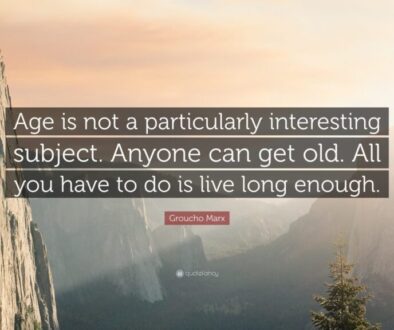How to Meditate With 10 Awesome Tips
Hello, friends!
I’ve discovered that learning how to meditate is a simple but powerful way to bring peace and clarity into my life, and I truly believe it can do the same for you. But I get it – starting or staying consistent with meditation can feel a little intimidating. The good news? Meditation doesn’t have to be complicated, and there’s no one “right” way to do it.
Whether you’re just curious about learning how to meditate or looking to deepen your practice, I’d love to share 10 practical tips that have helped me build a meditation routine that feels natural and, most importantly, makes a difference. I’ll also share some personal experiences about how meditation has positively impacted my life.
1. How to Meditate by Starting Small – Even a Minute Counts
When I first thought about meditating, I imagined I needed to sit in silence for 20 minutes to “do it right,” which felt like a huge commitment. So, I kept putting it off. Then, one day, I decided to try for just one minute. I set a timer, closed my eyes, and focused on my breathing. That single minute actually felt pretty refreshing – like a little mental reset. Over time, I naturally started meditating for longer. So, if long sessions feel overwhelming, start small. Even a single mindful breath can make a huge difference.
2. Find a Comfortable Position That Works for You
You don’t have to sit cross-legged on the floor if it’s not comfortable! I used to force myself into that traditional posture, but it would leave my back aching and distract me from the practice. Eventually, I realized I could sit in a chair with my feet on the ground, lie down, or even meditate while taking a gentle walk. The key is to find a position that feels relaxed yet keeps you alert.
3. Choose a Quiet (or Semi-Quiet) Space
I used to think I needed total silence to meditate effectively. But life is often noisy – whether it’s traffic, neighbors, or the hum of everyday activities. One day, I was meditating when my dogs started barking like crazy. Instead of getting frustrated, I decided to let the barking be part of my meditation. That experience helped me realize that you don’t need complete silence; you just need to accept the sounds around you and let them be.
4. Focus on Your Breath – It’s Always There
Your breath is always with you, making it a perfect anchor for meditation. I remember one stressful day at work when I felt overwhelmed. Instead of spiraling into worry, I took a five-minute break, closed my eyes, and focused on my breath – in and out. It was simple but incredibly effective. By the time I opened my eyes, I felt much calmer. Next time you’re stressed, try this: breathe in for four counts, hold for four, and exhale for four. It’s like a quick mental reset.
5. Don’t Worry About “Clearing Your Mind” – That’s Not the Goal
When I first started meditating, I thought I needed to have zero thoughts, but my mind just wouldn’t stop racing. I felt like I was failing. Then, I heard a teacher compare thoughts to clouds passing in the sky. Instead of trying to push them away, just watch them float by. That shift in perspective helped me a lot. Now, when thoughts pop up (and they will!), I just acknowledge them and gently bring my focus back to my breath. Meditation isn’t about stopping thoughts – it’s about not letting them take over.
6. Consider Guided Meditations – They Can Be Really Helpful
At first, I found it hard to learn how to meditate on my own, so I turned to guided meditations. I found a short, 10-minute session online, and a calm voice walked me through it. It made the practice feel much more accessible. There are tons of resources out there, like Headspace or Calm apps, or YouTube videos that guide you through various types of meditation – whether you’re looking to relax, focus, or even cultivate more self-compassion. This is especially helpful for learning how to meditate for beginners. I’ve personally used both Headspace and Calm and found them very useful!
7. Create a Routine That Fits Your Life
For a while, I tried to meditate at the same time every day, but it started feeling like just another task on my to-do list. I’d often skip it. But then I decided to link meditation with an existing habit – like right after brushing my teeth in the morning. It made it feel automatic. Now, I meditate each morning before checking my phone or email. Find a time that naturally fits into your day, whether it’s in the morning, during lunch, or before bed.
8. Try a Mantra or Affirmation
One of my favorite meditation techniques is using a mantra. During a stressful time, I started repeating “I am at peace” to myself. At first, it felt odd, but eventually, those words really resonated with me, and I felt more calm. If focusing just on your breath feels tricky, try repeating a phrase that speaks to you, like “Let go” or “I am enough.” It can be surprisingly grounding.
9. Be Patient and Kind with Yourself – It’s a Practice
I used to get frustrated when my mind wandered when I was learning how to meditate, but then I heard this advice: “If your mind wanders 100 times, gently bring it back 100 times. That IS the practice.” This helped me approach meditation with more kindness and patience. Some days, my mind is extra busy, and that’s okay. Meditation isn’t about doing it perfectly – it’s about showing up for yourself, no matter how distracted you feel.
10. Bring Mindfulness into Your Everyday Activities
One of the best things about meditation is that it doesn’t have to stay confined to a quiet room. I’ve found small ways to bring mindfulness into my daily routine:
- Mindful walking: Focusing on each step and how my feet feel on the ground.
- Mindful eating: Taking my time during meals and savoring each bite.
- Mindful breathing: Taking a few deep breaths when I’m stuck in traffic or waiting in line, instead of reaching for my phone.
The more you bring mindfulness into your everyday life, the more meditation becomes a way of living, rather than just a separate practice.
Final Thoughts
Learning how to meditate has truly made a positive difference in my life. Not because I’m now some expert meditator, but because it’s helped me slow down, be present, and be kinder to myself. Whether you meditate for one minute or one hour, every moment of awareness has value.
If you’re just starting out, don’t worry about getting it “right.” Just begin. Take a deep breath. Then maybe another. And soon, you might find the benefits of mindfulness unfolding in your life.
Have you ever tried meditation? What has your experience been like? I’d love to hear your thoughts in the comments!

Other Posts You May Enjoy
Discover the Profound Benefits of Mindfulness
9 Extraordinary Benefits of Life’s Simple Moments




